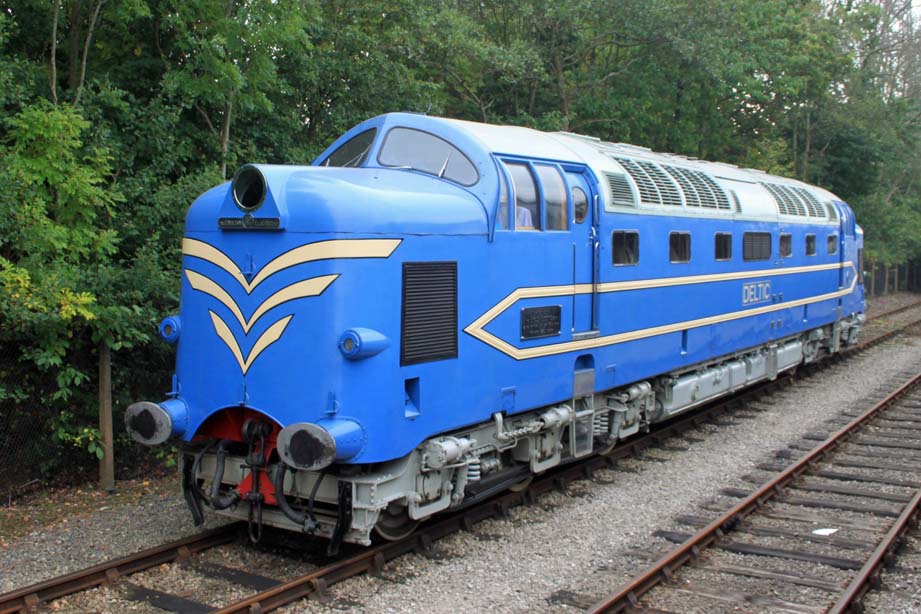
For just about all rail enthusiasts, the "Deltic" diesel locomotive holds a special place in their memories.
The prototype of the fleet was built in Preston in 1955 and carried a very distinctive blue and yellow livery.
It was built by English Electric and intended to be a replacement for the East Coast Mainline express passenger steam locomotive fleet which included the record breaking Gresley A4's and Peppercorn A1's.
It is no coincidence that the British Railway Modernization Plan was also published in 1955 as the Deltic was designed as a direct result of the recommendations.
What's Been Done to Celebrate the Locomotive Class?
The original prototype Deltic was preserved and is now part of the National Collection and for the anniversary year has been loaned to the Preston based Ribble Steam Railway (RSR).
The anniversary event is being held over the weekend of 8 and 9 Aug 2015 between 10:30 and 17:00 each day.
To add to the occasion, it is also the RSR's 10th anniversary.
The prototype Deltic arrived at the RSR three years ago and will remain in the museum until this October which is just one mile from where she was constructed.
Visits to the cab and engine room take place every Sunday between 14:00 and 16:00.
A Bit of Deltic History
English Electric sent the engine to British Rail (BR) for live operational testing with the expectation that they would not only build a fleet for BR but also for export.
This is why a headlight was fixed in the front of the engine in the distinctive locomotives nose.
The engine was a pair of Napier Deltic D18-25 opposed piston engines, each with a main and auxiliary generator, cooling system, and silencer.
Curiously one of the main attractions of the Deltic fleet is the highly distinctive engine noise.
Each of the Deltic power units developed 1,650 hp which lent the name Deltic to the diesel.
It had an axle loading of just 18 tons and the manufacturers boasted that it provided the best power to weight ratio ever.
The locomotive commenced live testing in October 1955 and was based at Liverpool's Edge Hill depot hauling "The Merseyside Express" from Liverpool to Euston and returning on "The Shamrock".
The engine was initially designed with a maximum speed of 90 mph but re-gearing allowed a 100 mph speed to be achieved.
It was the most powerful single engined locomotive in the World at the time.
In 1956, after attention back at the English electric factory, it was re-allocated to Carlisle Durran shed where trials using BR test vehicles were undertaken over the heavily graded Settle route.
The engine resumed its late 1955 services again based at Liverpool and after being used on expresses, was re-allocated to the Eastern Region's Hornsey Depot a few miles out of Kings Cross for more trials.
These saw the engine run at just over 100 mph in 1959 before being sent north to Edinburgh to be further tested on the famous Waverley route before returning south to be used on passenger trains.
It was used in regular service until 1961 when after about 450,000 miles of running, an engine failure led to withdrawal from service.
The locomotive was taken to the English Electric's Vulcan Foundry for storage while it's future was considered.
In the meantime, a fleet was built and they replaced express steam traction by 1964 operating at Kings Cross.
Preservation Beckons
In 1963 it was decided to cosmetically restore the locomotive and to donate it to the Science Museum as a static exhibit.
It arrived in London by road on 28 Apr 1963 and stayed there for the next 30 years when it went to the National Railway Museum at York.
The prototype locomotive is famous for its once seen, never forgotten, unique blue livery and aluminium mouldings plus the yellow whisker markings on each end.
It is literally a unique locomotive with a real historic place in railway history and the chance to see it 60 years on in the City where it was built should not be missed.
Preston station is served by trains from all over the UK and the RSR Museum gives a great glimpse into the past.
It is also the only preserved railway to boast a regular freight service running onto the national network joining it just south of Preston station.
The RSR runs trains every hour on weekends until September and the three mile return trip crosses Preston Dock swing bridge (a unique feature) and follows the River Ribble offering views of the City of Preston that are unique.
Author unknown.
(because there was no image with original article)
*2. Original news article image replaced.
(usually because it's been seen before)
under the provision in Section 29
of the Canadian Copyright
Modernization Act.










